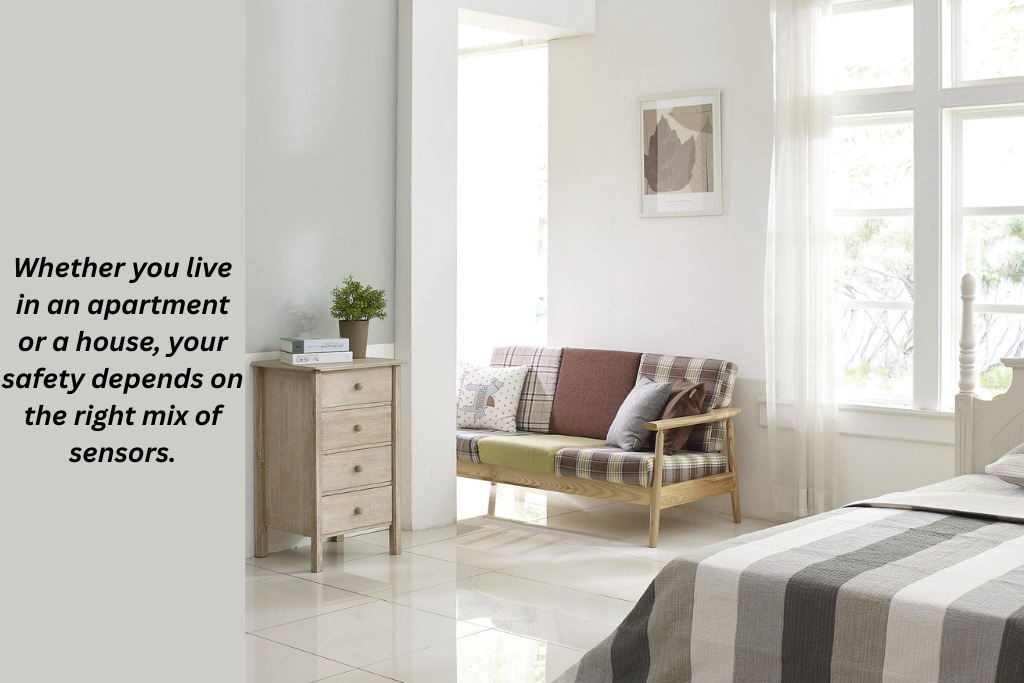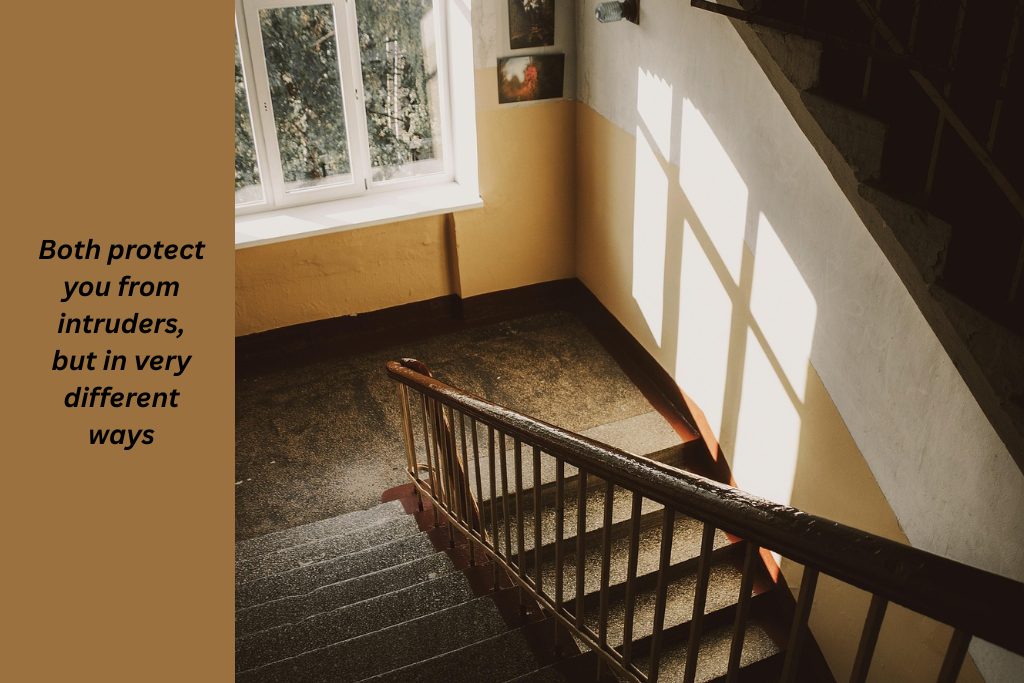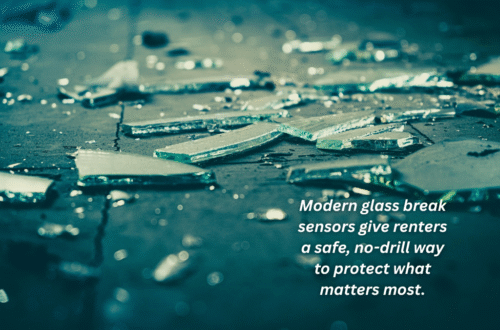
Glass Break Sensors vs. Motion Sensors: Which One Do You Really Need?
Glass break sensors or motion sensors? What your home or apartment security really needs. It is a debate about protecting your home from intruders by purchasing the right gadget. While both are important, they serve their purpose in different ways. Knowing which one you actually need depends on your living setup and lifestyle. However, let’s break it down for you to get a better idea of each device.
What Is a Glass Break Sensor?
A glass break sensor detects a distinct sound frequency or vibration of shattering glass. It is a small device mounted near windows or glass doors. When glass is broken or somebody interferes with it, the sensor immediately triggers an alarm. There are two main types of these sensors:
- Acoustic sensors are the ones that detect the specific frequency of glass breaking.
- Shock sensors detect physical vibrations on the window or frame.
Once triggered, they send a signal to your security system or mobile app. By getting immediate alerts, you act instantly, even if you’re not home. The glass break sensors are ideal for apartments or homes with:
- Large windows
- Balcony doors
- Sliding glass doors.
- Renters or homeowners who want early break-in alerts
What Is a Motion Sensor?
A motion sensor detects motion within a specific area. This might be your hallway, living room, or entryway. Motion sensors work by using infrared or microwave technology. Some also see dual-technology detection. This device senses movement where there shouldn’t be any. It activates an alarm or camera. Motion sensors are ideal for a home with:
- Multiple entry points
- Open floor plans
- Detecting intruders after they’ve already entered.
Key Differences Between Glass Break vs. Motion
| Feature | Glass Break Sensor | Motion Sensor |
| Detection Trigger | Sound or vibration of breaking glass | Movement or body heat |
| Coverage Area | 15-25 feet radius near windows | 30-40 feet in open areas |
| Best Placement | Near windows or glass doors | In hallways, corners, or main living spaces |
| Purpose | Prevent entry | Detect presence after entry |
| False Alarms | Can be triggered by loud noises | Can be triggered by pets or HVAC movements |
| Type of coverage | Perimeter protection. They detect the sound or vibration of glass breaking, so they trigger when windows/doors are shattered | Interior detection. Once someone enters the room, the motion sensor picks up movement (regardless of how they entered) |
| When the alarm activates | As soon as the glass breaks (entry begins) | Only when the intruder moves into the sensor’s coverage zone, so there’s a delay after entry |
| Use case | Good for large windows, sliding doors, or glass panes where intruders could break without triggering traditional door/window sensors | Covers any entry method. It also works even if someone sneaks in using a door, wall, or from inside |
| Limits and drawbacks | Only works if the glass breaks audibly at the right frequency. If the glass is not broken (cut, cracked, or removed quietly), it may fail. Also, the coverage area is limited (the detector needs to be within some distance of the glass) | In “stay” mode (when people are inside). Many systems bypass interior motion sensors, so you can move freely without triggering alarms. This does leave interior spaces less protected at night or when staying in |
| Speed of detection | Users say glass detectors trigger as the glass breaks, giving you the earliest possible alert | Motion sensors detect when someone is inside, so there’s a delay. |
| Cost and complexity | Glass-break sensors cost extra and need good placement and calibration | Motion sensors are often standard in systems and are cheaper per unit |
What’s best for your safety setup?
It depends on what security concerns you have been experiencing. Here’s how to choose a sensor based on your specific security needs.
Use the “layered defense” idea. This means that you should not rely on one kind of sensor. Instead, go for setup combos. That way, even if an intruder avoids one, he will face another layer of security. This will buy you enough time to take action. Such as
- Door and window contact sensors on frames and sliding doors
- Glass break detectors for large windows or glass doors
- Motion sensors for interior spaces
- Cameras, alarms, and lights

2. Prioritize buying sensors after considering your vulnerabilities.
- If you have large windows or sliding glass doors near entry points. Use glass break detectors there.
- Are there rooms someone must pass through, such as hallways or a living room? Use motion sensors there.
- At night, motion sensors are tricky because you move around. So rely more on perimeter sensors when you’re home or asleep.
3. Many security systems disable interior motion sensors when you’re inside to avoid false alarms. This is to allow you to move freely. But that leaves your interior wide open if someone gets past the perimeter. Glass break detectors remain active even in stay mode in many systems. So, ensure whatever system you pick keeps your perimeter sensors always active. That gives you a safety “shell” you can rely on.
4. Check sensor specs and coverage, as glass break detectors only cover a certain radius. You may need one per room with glass. Also, motion sensors have blind spots and can suffer from false alarms (pets, etc.). That’s why the device sensitivity, mounting location, and direction matter a lot.
Which One Do You Really Need?
It depends on your home layout and security goals:
Choose Glass Break Sensors If:
- You live on the ground floor or have large glass doors/windows.
- You want early warnings before a break-in occurs.
- You prefer a renter-safe, no-drill option.
Choose Motion Sensors If:
- You have multiple rooms or hallways that need coverage.
- You want to catch movement once someone’s inside.
- You have an interior security system with cameras or smart alarms.
Conclusion
We suggest that you should not just pick one. Combining both gives you more comprehensive protection. However, be cautious about false alarms. Make sure your perimeter stays active even when you’re inside. Test your system often in different conditions to fine-tune.
FAQs
Do I need window sensors if I have motion sensors?
Yes, you do need window sensors even if you have motion sensors. Although it depends upon your security concerns, you should set up motion sensors and detectors both on windows and doors.
Do glass break sensors actually work?
Glass break sensors are not primary security solutions. However, these sensors work by detecting the sound of glass breaking. Glass break sensors are not overly stimulated by other sounds. That’s why they can detect if there’s any intrusion or break-in. The effectiveness of these sensors increases when you use them with other security devices such as smart locks and security cameras.
What are the disadvantages of glass break sensors?
Glass break sensors have certain limitations. They have a limited detection range and are prone to giving false alarms from similar sounds.




